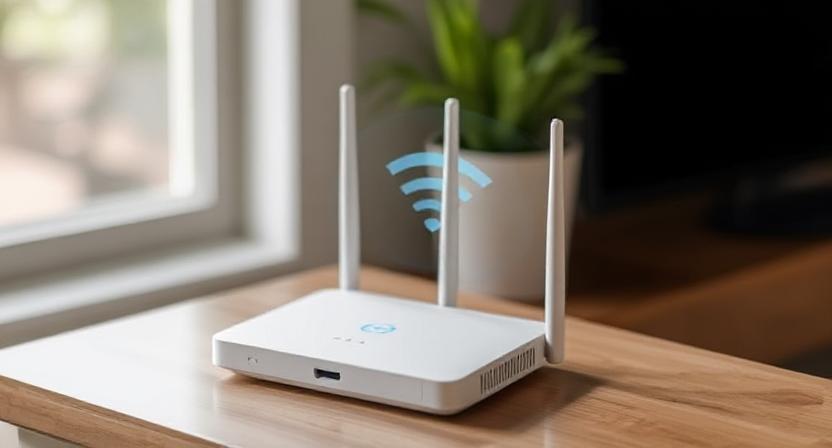The Smart Home Revolution in India
In 2025, Indian households are rapidly transforming with smart home technology. But did you know that your Wi-Fi router can now sense your presence and location inside your home—without cameras or wearable devices?
This futuristic capability is already becoming reality thanks to Wi-Fi motion sensing, a breakthrough that uses the way wireless signals interact with your body to determine where you are. This innovation not only enhances home automation but also boosts home security, health monitoring, and energy efficiency.
Let’s explore how it works, why it matters for Indian homes, and how you can use this emerging tech to your advantage.
What Is Wi-Fi Motion Sensing?
Wi-Fi motion sensing is a technology that leverages the reflection and disruption of wireless signals to detect movement and presence. Unlike traditional motion sensors or CCTV, it doesn’t require direct visual input or physical contact.
How It Works
-
Wi-Fi signals travel through your home.
-
When a person moves, they disrupt these signals.
-
The router’s AI algorithms analyze these disturbances to determine location, movement patterns, and even gestures.
This is made possible by Wi-Fi 6 and Wi-Fi 7 routers, which offer better bandwidth, higher frequency, and more precise data interpretation.
Real-World Use Cases in Indian Homes
| Use Case | How It Helps Indian Households |
|---|---|
| Smart Lighting | Lights turn on automatically when you enter a room. |
| Elderly Care | Detects falls or inactivity in seniors, sending alerts. |
| Child Safety | Tracks movement in sensitive areas like kitchens or balconies. |
| Energy Efficiency | Turns off AC/fan when no one is in the room. |
| Security | Detects unusual movement when home is empty. |
Benefits of Wi-Fi-Based Location Sensing
1. No Need for Cameras
For many Indian families, privacy is a top concern. This tech works without cameras, reducing the risk of surveillance or hacking.
2. Affordable Upgrade
You don’t need to buy extra hardware—just upgrade to a smart Wi-Fi 6 or Wi-Fi 7 router, such as TP-Link Deco X75 or Netgear Orbi.
3. Multi-Person Tracking
Unlike traditional PIR sensors, Wi-Fi motion sensing can track multiple people across different rooms simultaneously.
4. Health Monitoring
In 2025, smart routers are already capable of monitoring breathing and sleep patterns, particularly useful for senior citizens and patients at home.
How Indian Startups Are Embracing This Technology
Several Indian companies and researchers are investing in Wi-Fi sensing for smart homes:
-
WiSig Networks (Hyderabad) and Signalchip (Bengaluru) are developing indigenous chipsets for 6 GHz Wi-Fi sensing.
-
IIT Madras and IISc Bangalore are conducting AI research on signal pattern recognition for indoor tracking.
🧠 Stat Insight: According to NASSCOM, India’s smart home market is expected to grow by 21.5% CAGR, reaching ₹75,000 crore by 2026.
Is It Safe? Understanding Privacy Concerns
Addressing Indian Concerns
In India, concerns about digital privacy and data collection are rising. Wi-Fi sensing:
-
Does not record audio or video.
-
Stores data locally or in encrypted formats.
-
Follows the Data Protection Act, 2023, ensuring user rights and transparency.
Still, always review privacy settings and opt-in features before activating location tracking.
Comparison with Other Home Tracking Technologies
| Technology | Uses Cameras | Privacy Risk | Accuracy | Cost |
|---|---|---|---|---|
| Wi-Fi Sensing | ❌ No | ✅ Low | ✅ High | 💸 Medium |
| PIR Sensors | ❌ No | ✅ Low | ❌ Medium | 💸 Low |
| CCTV Surveillance | ✅ Yes | ❌ High | ✅ High | 💸 High |
| Wearables | ❌ No | ✅ Low | ✅ High | 💸 High |
How to Set It Up in Your Indian Home
Step-by-Step Guide
-
Upgrade your router to a model with motion sensing support (e.g., Asus RT-AX88U Pro, TP-Link Archer BE800).
-
Install companion apps such as TP-Link HomeShield or Plume Motion.
-
Enable motion sensing from app settings.
-
Connect smart home devices like lights, thermostats, or cameras.
-
Customize zones for rooms like bedroom, kitchen, or living room.
-
Monitor real-time activity via mobile dashboard.
Tips for Better Accuracy
-
Place the router in a central location.
-
Reduce interference from walls and metallic objects.
-
Use mesh systems for large Indian homes or duplex apartments.
The Future: What’s Next in Wi-Fi Sensing?
By 2026, your Wi-Fi router will not only detect presence but also:
-
Read gestures (e.g., wave to turn on the fan).
-
Measure heart rate and respiration.
-
Integrate with AI assistants like Alexa and Google Assistant for predictive actions.
🚀 Fun Fact: In Japan and Germany, Wi-Fi motion sensing is being used in hospital beds to monitor patients non-invasively!
Conclusion: The Invisible Smart Eye in Your Home
In 2025, your Wi-Fi router is no longer just a source of internet—it’s becoming a central brain of your smart home. With motion sensing, Indian households can enjoy convenience, safety, and efficiency without compromising privacy.
This innovation is particularly valuable for Indian families with elderly members, children, or busy lifestyles, making daily life smoother and smarter.
Call to Action
🌐 Ready to make your home smarter in 2025?
Upgrade to a motion-sensing Wi-Fi 6 or Wi-Fi 7 router and experience the future of connected living—right from your living room!
🔔 Don’t forget to share this article with friends and family and subscribe to our newsletter for more insights on emerging home tech in India!
